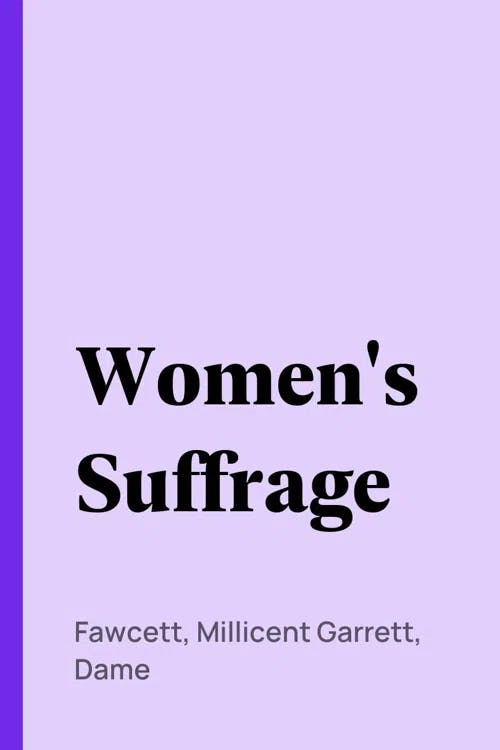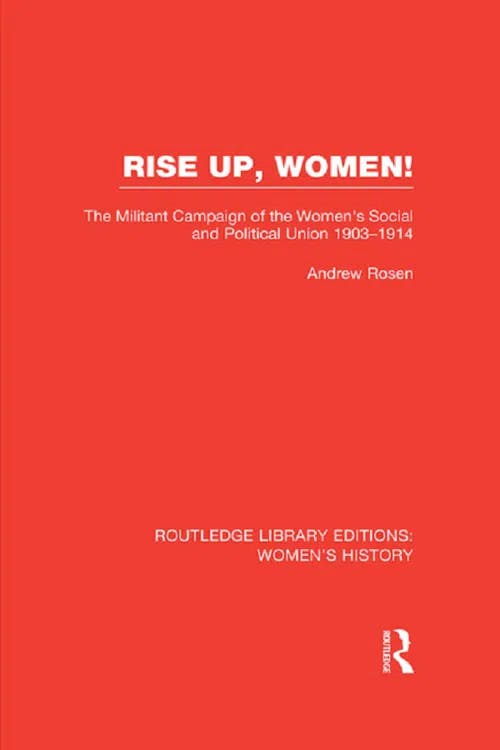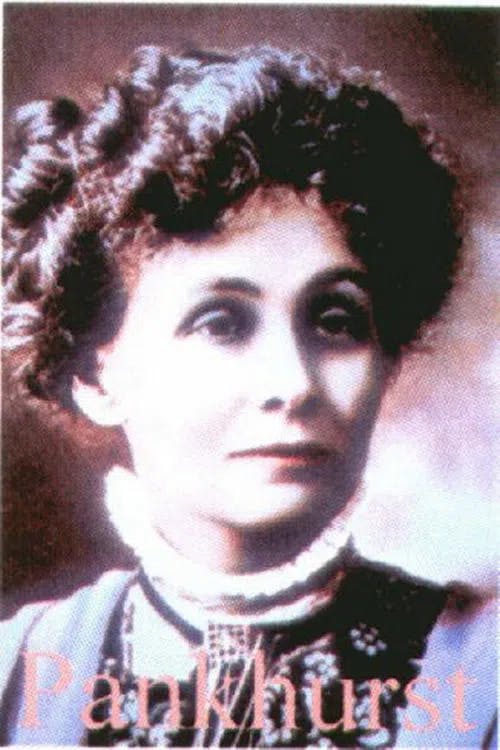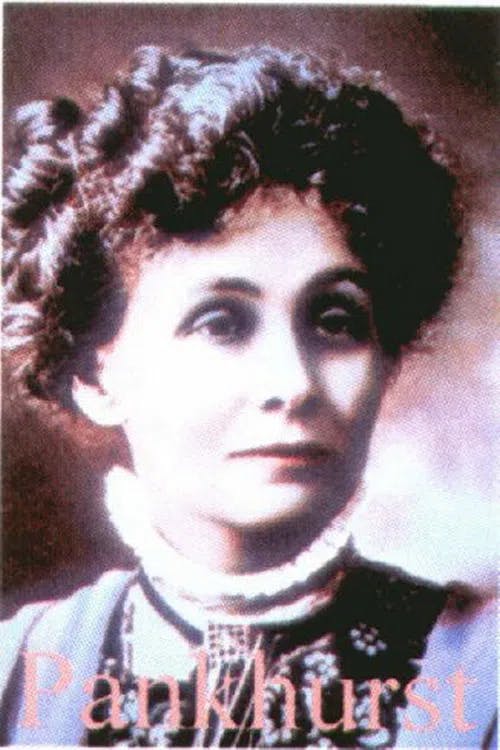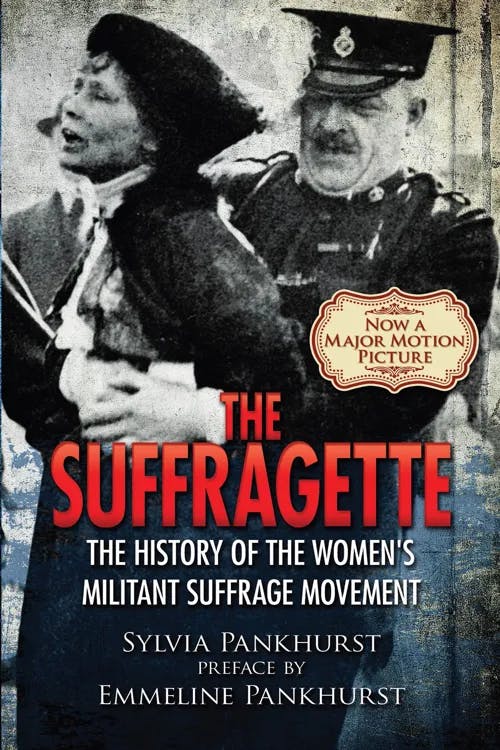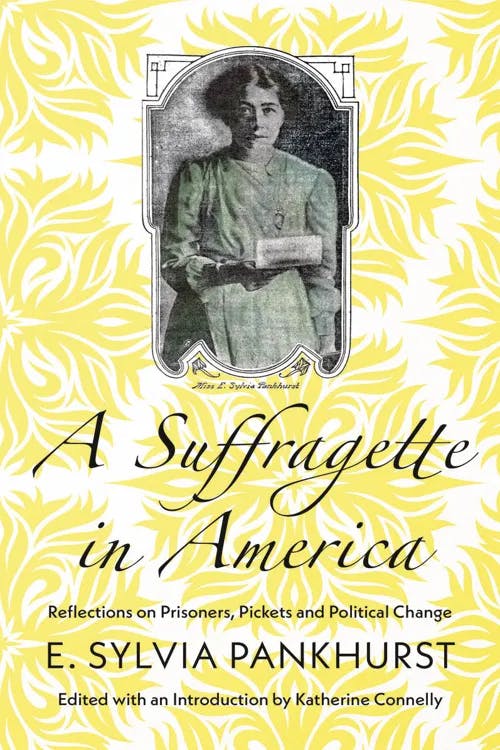Who were the Suffragettes?
MA, History (University of Edinburgh)
Date Published: 22.04.2024,
Last Updated: 22.04.2024
Share this article
Defining the suffragettes
On June 21, 1908 in Hyde Park, London, a group of women marched and spoke to the gathering crowd. Dressed in purple, white, and green, these women wore matching scarves and buttons as well as military sashes with “Votes for Women” written across them. They held banners, some reading “Votes for Women” while others said “Deeds not Words.” This event, Women’s Sunday, was run by women who were part of the Women’s Social and Political Union (WSPU) organized by Emmeline Pankhurst, and these female activists, marchers, and campaigners weren’t just women interested in politics: They were suffragettes.
The suffragettes were women who, between 1903 and 1914, campaigned for women’s suffrage in public elections in Britain. By the late 1800s, women in various countries had gained the right to vote, known as “suffrage.” Most notably, in 1893, New Zealand enfranchised women over the age of 21 (Patricia Grimshaw, Women's Suffrage in New Zealand, 2013). By 1896 in the United States, Utah, Wyoming, Colorado, and Idaho had granted women full suffrage (Dawn Durante, 100 Years of Women's Suffrage, 2019). However, by the early twentieth century, women in Britain still faced obstacles to their voting rights. Inspired by women gaining the right to vote in other countries, feminists began to rally and call for change.
The term “suffragette” was coined by a journalist from the Daily Mail. Originally seen as a slur, the women-only group WSPU adopted the term as it identified its members as being separate from non-militant suffrage groups, such as the suffragists (Eileen Luscombe, History and Legacy of the Suffragette Fellowship, 2023). Known for taking direct action approaches to their cause, the suffragettes also took part in civil disobedience exercises and weren’t afraid to utilize militancy in their movement. According to Jeanette Winterson in Courage Calls to Courage Everywhere, the title of which is taken from a speech by suffragist leader Millicent Fawcett in 1913, the suffragettes took part in many controversial tactics that disrupted society, particularly aristocratic society:
From that day forward, women went militant. Middle-class women, aristocratic women, working women. Women confronted politicians at meetings, at their homes, even on the golf course. Women chained themselves to railings. Women blew up letterboxes – the Victorians and Edwardians loved writing letters, and the Empire depended on paperwork – so getting the post blown up was really annoying. (2018)
Jeanette Winterson
From that day forward, women went militant. Middle-class women, aristocratic women, working women. Women confronted politicians at meetings, at their homes, even on the golf course. Women chained themselves to railings. Women blew up letterboxes – the Victorians and Edwardians loved writing letters, and the Empire depended on paperwork – so getting the post blown up was really annoying. (2018)
The suffragettes faced imprisonment and took part in other militant activities, including bombings and hunger strikes.
This guide will discuss the origins of the suffragette movement, the actions of the suffragettes in the fight for women’s right to vote, and the lasting impact of the suffragettes in Britain and around the world.
The emergence of the suffrage movement
The women’s suffrage movement began years before the suffragettes came to the scene. In 1865, the Kensington Society was formed in London for women to meet and discuss topics related to women’s rights in society and female education, as many of the attendees were educated, middle-class women who were barred from higher education. In 1867, the Manchester National Society for Women's Suffrage was founded, along with sister societies in London and Edinburgh, all of which focused on women’s suffrage specifically.
Later in October 1897, the National Union of Women’s Suffrage Societies (NUWSS) was formed under the leadership of Millicent Fawcett (1847-1929). Fawcett was an English writer and political activist who became interested in women’s rights after watching her sister struggle to become a doctor. The NUWSS focused on women’s suffrage in the UK and supported the idea that suffrage could be granted to women through non-militant and legal actions. Women in the NUWSS considered themselves suffragists, meaning they wished to achieve suffrage through lawful means and persuade politicians through words. They believed that if they followed the rules and obeyed the law, politicians couldn’t accuse them of being irresponsible and unworthy of the vote. As indicated by Fawcett in Women's Suffrage, the women believed that violence would turn the government away from their cause,
The National Union of Women's Suffrage Societies endeavoured to steer an even keel. They never weakened in their conviction that constitutional agitation was not only right in itself, but would prove far more effective in the long run than any display of physical violence, as a means of converting the electorate, the general public, and, consequently, Parliament and the Government, to a belief in women's suffrage. But the difficulties for a long time were very great. A few of our own members attacked us because we were not militant; others resigned because they disapproved of the militantism which we had repudiated. (1912, [2015])
Millicent Garrett Fawcett
The National Union of Women's Suffrage Societies endeavoured to steer an even keel. They never weakened in their conviction that constitutional agitation was not only right in itself, but would prove far more effective in the long run than any display of physical violence, as a means of converting the electorate, the general public, and, consequently, Parliament and the Government, to a belief in women's suffrage. But the difficulties for a long time were very great. A few of our own members attacked us because we were not militant; others resigned because they disapproved of the militantism which we had repudiated. (1912, [2015])
Emmeline Pankhurst and the formation of the WSPU
In 1903, the Women’s Social and Political Union was formed by Emmeline Pankhurst (1858-1928), an English political activist, writer, and lifelong campaigner for women’s rights, and three of her children, Sylvia, Christabel, and Adela. The WSPU met in Emmeline Pankhurst’s Manchester home where women came together on a weekly basis to discuss ideas for achieving enfranchisement. There was no formal membership list and the group was mostly financially supported by Emmeline herself and donations from supporters. They advocated for women’s suffrage through traditional means, as indicated by Andrew Rosen in Rise Up, Women!:
The WSPU was at this time almost exclusively concerned with trying to instil enthusiasm for women’s suffrage in Labour organizations, and the effort of persuading such organizations was conducted by orthodox means. The WSPU’s most extensive proselytizing was directed at the ILP [Independent Labour Party], which was divided over the wisdom of working for extension of the existing franchise to women, as opposed to (2013)
Andrew Rosen
The WSPU was at this time almost exclusively concerned with trying to instil enthusiasm for women’s suffrage in Labour organizations, and the effort of persuading such organizations was conducted by orthodox means. The WSPU’s most extensive proselytizing was directed at the ILP [Independent Labour Party], which was divided over the wisdom of working for extension of the existing franchise to women, as opposed to (2013)
At first, the WSPU was focused on bringing the issue of women’s subjugation to light through “constitutional” exploits, using their talent for persuasive speech to champion their rights. For instance, in February 1904, at a meeting for the Free Trade League in Manchester’s Free Trade Hall, Christabel Pankhurst stepped forward and proposed an amendment to Winston Churchill’s resolution, explaining that the Representation of the People Acts only used masculine words, thus excluding women (Rosen, 2013). Over time, women in the WSPU started to believe that proactive, substantial change wouldn’t be achieved through words alone. Thus, they began to take direct action.
‘Deeds, not words’: The radical activism of the suffragettes
In October 1905, inspired by Christabel’s bravery at the Free Trade Hall, fellow suffragette Annie Kenney joined Christabel in disrupting a speech given by Sir Edward Grey. This was the first of many direct action demonstrations delivered by women in the WSPU. Once Grey had finished his speech, Kenney stood up and shouted, ‘Will the Liberal government give women the vote?’ Following this statement, Christabel unfurled a ‘Votes for Women’ banner she had snuck in and asked the question again. When Edwards still wouldn’t answer, even after they followed procedure and wrote the question down for Edwards to look over, the two women decided to stand on their chairs and shout the question.
They were escorted out by police but not before Christabel attempted to spit in police officers’ faces and hit one of them at least twice. Both were charged with disorderly conduct, assaulting a police officer, and causing an obstruction. Christabel explained that they had to conduct uncivil acts because of the legal position of women. When Emmeline pleaded that she would pay fines for Annie and Christabel, Christabel insisted that she wouldn’t go home if the fine was paid. They became the first martyrs of the WSPU as Jad Adams explains,
The principal aim of the protest had been achieved: women’s suffrage had risen up the agenda. The suffragists even had a new slogan. Their banner had been going to call for ‘Women’s Suffrage’ but at the last minute they had changed it. ‘Votes for Women’ was a slogan for the 20th century: direct and to the point. (Pankhurst, 2018)
Jad Adams
The principal aim of the protest had been achieved: women’s suffrage had risen up the agenda. The suffragists even had a new slogan. Their banner had been going to call for ‘Women’s Suffrage’ but at the last minute they had changed it. ‘Votes for Women’ was a slogan for the 20th century: direct and to the point. (Pankhurst, 2018)
The WSPU continued to hold meetings and demonstrations, garnering more attention to their cause. Emmeline and her daughters remained outspoken and inspired women across Britain to join the movement. As the media began to spotlight their cause, the women began to see the potential for participating in militant activities. They smashed windows, especially targeting government offices, businesses, and establishments frequented by the wealthy, and even set fire to post boxes. Their tactics then became more severe, as they initiated bombings, participated in hunger strikes, and, subsequently, faced imprisonment.
Bombings
Beginning in 1912, the WSPU started using arson and bombings as part of its campaign. According to Simon Webb in The Suffragette Bombers (2014), for the suffragettes, bombings made logical sense. If they created enough devastation and insurance companies had to pay out millions for damages, the government would have to start listening to their demands:
The decision to resort to bombings in public places was almost certainly a deliberate and calculated move by the WSPU, once they saw that attacks limited to the government and its agents were proving ineffective in rousing the public and persuading them to support the suffragettes. There were, at least at the beginning of the terrorism, sound historical reasons for favouring such a strategy. (Webb, 2014)
Simon Webb
The decision to resort to bombings in public places was almost certainly a deliberate and calculated move by the WSPU, once they saw that attacks limited to the government and its agents were proving ineffective in rousing the public and persuading them to support the suffragettes. There were, at least at the beginning of the terrorism, sound historical reasons for favouring such a strategy. (Webb, 2014)
Hunger strikes
Between 1909 and 1914, the suffragettes embarked on a hunger strike campaign. The first to go on hunger strike was Marion Wallace Dunlop, a suffragette sent to Holloway prison in 1909 who refused to eat as a form of protest for not being considered a political prisoner. In an effort to ensure Dunlop would not be considered a martyr for the suffragette cause, she was released early. However, her courage inspired other suffragettes to participate in hunger strikes, including the Pankhursts. In her memoir My Own Story, Emmeline Pankhurst reflects on her admiration for the hunger strikers, expressing her dedication to the campaign:
I warned the magistrate that I should at once adopt the hunger strike, and I told him that if I lived at all until the summer it would be a dying woman who would come up for trial. (1914, [2020])
Emmeline Pankhurst
I warned the magistrate that I should at once adopt the hunger strike, and I told him that if I lived at all until the summer it would be a dying woman who would come up for trial. (1914, [2020])
The British government were concerned that if the suffragettes died in prison, the prison would be held liable for their deaths. Therefore, the government began enforcing force-feeding to hunger strikers. The force-feeding was brutal; rubber tubes were used, causing not only extreme discomfort but injuring throats and digestive systems permanently (Winterson, 2018). In April 1913, Reginald McKenna from the Home Office passed the Prisoners (Temporary Discharge for Ill Health) Act 1913, otherwise known as the Cat and Mouse Act. The Act ensured that the suffragette, the “mouse,” would be temporarily released from prison if she became ill and be readmitted only once her health improved, being recaptured by the British government, i.e., the “cat.” The British government would be absolved of blame if a suffragette died or became injured. After the Act was passed, most force-feeding ceased (Martin Farr, Reginald McKenna, 2004).
The public was outraged by the treatment of the suffragettes in prison, believing that they should hold political prisoner status and be treated with more respect. Though the public held differing opinions regarding the lengths the suffragettes were taking to achieve suffrage, they recognized that the force-feedings were inhumane and should be stopped.
Imprisonment
Until the beginning of the First World War, hundreds of suffragettes were imprisoned, usually due to unpaid fines or disorderly conduct offences. The suffragettes worked to be considered political prisoners with the unfailing support of the WSPU. In her work, The Suffragette (1931), prefaced by Emmeline Pankhurst, Sylvia Pankhurst discusses the growth of the WSPU, highlighting the tactics of its members, including the suffering suffragettes endured as they were arrested, force-fed, and imprisoned. According to Sylvia Pankhurst, though the suffragettes suffered greatly, they knew that their suffering would be worth it in the end:
As yet most of us knew little of the interior of a prison, but, on those burning July days, we knew enough to think with sorrow and anxiety of our comrades shut away from the beauty of the summer in the heat of their small, stifling cells. We heard with joy that they were happy and contented to suffer imprisonment for the women’s cause. And now it seemed to us as though the spirit of revolt against oppression were flowing onward and spreading, like some great tide to all the womanhood of the world. (1931, [2015])
Sylvia Pankhurst
As yet most of us knew little of the interior of a prison, but, on those burning July days, we knew enough to think with sorrow and anxiety of our comrades shut away from the beauty of the summer in the heat of their small, stifling cells. We heard with joy that they were happy and contented to suffer imprisonment for the women’s cause. And now it seemed to us as though the spirit of revolt against oppression were flowing onward and spreading, like some great tide to all the womanhood of the world. (1931, [2015])
For the suffragettes, imprisonment was a necessity for the suffragette cause. Imprisonment would ultimately deliver liberty. They believed that sacrifice would help support the greater suffrage cause in both Britain and around the world. Their work paid off when, in 1928 under the Equal Franchise Act, women over the age of 21 were granted the right to vote.
The influence of the suffragette movement
Most notably, the influence of the suffragettes can be seen in the United States, where they inspired American women to take direct action in the name of women’s suffrage. Sylvia Pankhurst toured the US in 1911, visiting states across the country, from California to Illinois to Massachusetts to Tennessee, where she gave speeches and inspired many women to engage in local politics and support the women’s suffrage cause. Like their British counterparts, American women began participating in civil disobedience activities and hunger strikes. Women like Alice Paul and Lucy Burns were influenced by the militant campaign ushered in by the British suffragettes and held their own protests and parades. During Sylvia's tour, she was received by Alice Paul in Philadelphia, where she stayed at the Women’s Graduate Club and learned more about the women’s suffrage movement in the US.
In her introduction to A Suffragette in America (2019), Katherine Connelly explains that not only did Sylvia’s tour inspire American women to fight for the right to vote by all means necessary, but it also helped pave the way for changes in the way British suffragettes worked to dismantle the patriarchy in British society. Sylvia recognized the lack of voting rights for women as being aligned with systemic oppression and inequality, and was a contradiction to democratic ideology:
The lecture tours of America provided Sylvia with the opportunity to explicitly situate the demand for women’s political emancipation as a part of wider struggles against oppression and disempowerment which sustained capitalist exploitation [...] In so doing, Sylvia begins to articulate her view of democracy as an instrument to dismantle inequality by providing all with an equal voice. On her return to Britain, Sylvia sought to apply these ideas to the militant suffragette movement, with profound political and personal consequences. ("Introduction", Connelly, 2019)
E. Sylvia Pankhurst
The lecture tours of America provided Sylvia with the opportunity to explicitly situate the demand for women’s political emancipation as a part of wider struggles against oppression and disempowerment which sustained capitalist exploitation [...] In so doing, Sylvia begins to articulate her view of democracy as an instrument to dismantle inequality by providing all with an equal voice. On her return to Britain, Sylvia sought to apply these ideas to the militant suffragette movement, with profound political and personal consequences. ("Introduction", Connelly, 2019)
Closing thoughts
Believing in “deeds not words,” the suffragettes used direct action approaches in their fight for female suffrage. In the early twentieth century, the suffragettes engaged in militant activities, conducted bombings, and hunger strikes, and spent time in jail, all for the women’s suffrage movement. Spearheading the movement was the WSPU under the leadership of the Pankhurst family, though women like Millicent Fawcett and the NUWSS had inspired women to support the suffrage movement years earlier. However, the WSPU believed that women had to move away from merely taking part in speeches and had to start disrupting British politics and society through more militant actions. Though these women suffered for the suffrage cause, they inspired other suffragettes in places like America to take direct action for the cause. This ushered in more interest in the suffragette movement and women in both countries gained the right to vote in the 1920s.
While the suffragettes were oftentimes considered controversial for their militant actions, they inspired women around the world to stand up against oppression, challenge masculine norms in their communities, and participate in politics.
The legacy left by the suffragettes continues to influence feminists to campaign for women’s rights, minority rights, and rights for the disadvantaged. Feminism today, currently in its fourth wave, has become more inclusive, with activists campaigning for equality regardless of gender, sexuality, or socioeconomic status. For example, many feminists have participated in the Black Lives Matter movement, recognizing the importance of intersectional feminism. The rise of social media has provided women a platform to discuss experiences of sexism. You can learn more about different branches of feminism through our study guides "What is Black Feminism?" and "What is Postcolonial Feminism?".
Today, the suffragettes are honored in a number of ways, including through monuments and statues, like the statue of Emmeline Pankhurst in St. Peter’s Square in Manchester, England and the Tennessee Woman Suffrage Memorial in Centennial Park in Nashville. These women paved the way for women to find their place in politics and finally have their voices heard in their communities.
Further reading
Voices from History: East London Suffragettes (2014) by Sarah Jackson and Rosemary Taylor
Mrs Despard and the Suffrage Movement (2020) by Lynne Graham-Matheson and Helen Matheson-Pollock
Ireland's Suffragettes (2014) by Sarah-Beth Watkins
The Rebel Suffragette (2021) by Beverley Adams
The Scottish Suffragettes and the Press (2017) by Sarah Pederson
Suffragette City (2019) edited by Elizabeth Darling and Nathaniel Walker
March, Women, March (2021) by Lucinda Hawksley
Suffrage and the Pankhursts (2013) by Jane Marcus
Who were the suffragettes?
What is the difference between the suffragists and the suffragettes?
What was the WSPU?
What is an example of suffragette militant activity?
How has the suffragette movement been influential?
Bibliography
Adams, J. (2018) Pankhurst. Haus Publishing. Available at: https://www.perlego.com/book/2801376/pankhurst-pdf
Connelly, K. (2019) “Introduction” in A Suffragette in America: Reflections on Prisoners, Pickets, and Political Change. Pluto Press. Available at: https://www.perlego.com/book/962045/a-suffragette-in-america-reflections-on-prisoners-pickets-and-political-change-pdf
Durante, D. (2019) 100 Years of Women’s Suffrage. University of Illinois Press. Available at: https://www.perlego.com/book/2382807/100-years-of-womens-suffrage-a-university-of-illinois-press-anthology-pdf
Farr, M. (2004) Reginald McKenna. Routledge. Available at: https://www.perlego.com/book/717046/reginald-mckenna-pdf
Fawcett, Garrett, M. and Dame (2015) Women’s Suffrage: A Short History of a Great Movement. Perlego. Available at: https://www.perlego.com/book/1729160/womens-suffrage-a-short-history-of-a-great-movement-pdf
Grimshaw, P. (2013) Women’s Suffrage in New Zealand. Auckland University Press. Available at: https://www.perlego.com/book/1465325/womens-suffrage-in-new-zealand-pdf
Hume, L. (2016) The National Union of Women’s Suffrage Societies 1897-1914 (Routledge Revivals). Routledge. Available at: https://www.perlego.com/book/1480828/the-national-union-of-womens-suffrage-societies-18971914-routledge-revivals-pdf
Luscombe, E. (2023) History and Legacy of the Suffragette Fellowship: Calling all Women. Routledge. Available at: https://www.perlego.com/book/4214330/history-and-legacy-of-the-suffragette-fellowship-calling-all-women-pdf
Pankhurst, E. (2020) My Own Story. Open Road Media. Available at: https://www.perlego.com/book/2432712/my-own-story-pdf
Pankhurst, S. (2019) A Suffragette in America: Reflections on Prisoners, Pickets, and Political Change. Pluto Press. Available at: https://www.perlego.com/book/962045/a-suffragette-in-america-reflections-on-prisoners-pickets-and-political-change-pdf
Pankhurst, S. (2015) The Suffragette: The History of the Women’s Militant Suffrage Movement. Dover Publications. Available at: https://www.perlego.com/book/109879/the-suffragette-the-history-of-the-womens-militant-suffrage-movement-pdf
Rosen, A. (2013) Rise Up, Women!: The Militant Campaign of the Women’s Social and Political Union. Routledge. Available at: https://www.perlego.com/book/1676400/rise-up-women-the-militant-campaign-of-the-womens-social-and-political-union-19031914-pdf
Webb, S. (2014) The Suffragette Bombers: Britain’s Forgotten Terrorists. Pen and Sword. Available at: https://www.perlego.com/book/2445570/the-suffragette-bombers-britains-forgotten-terrorists-pdf
Winterson, J. (2018) Courage Calls to Courage Everywhere. Canongate Books. Available at: https://www.perlego.com/book/1457493/courage-calls-to-courage-everywhere-pdf
MA, History (University of Edinburgh)
Hannah Hamill has a PGDE in Secondary Education (History) from the University of Glasgow and a Master’s degree in History from the University of Edinburgh. She also received a Bachelor’s degree in English from Belmont University. Her research interests include The Troubles in Northern Ireland, Medieval Britain, the American Civil War, and immigration to the southern United States. Her dissertation examined loyalist and republican women’s involvement during The Troubles.


